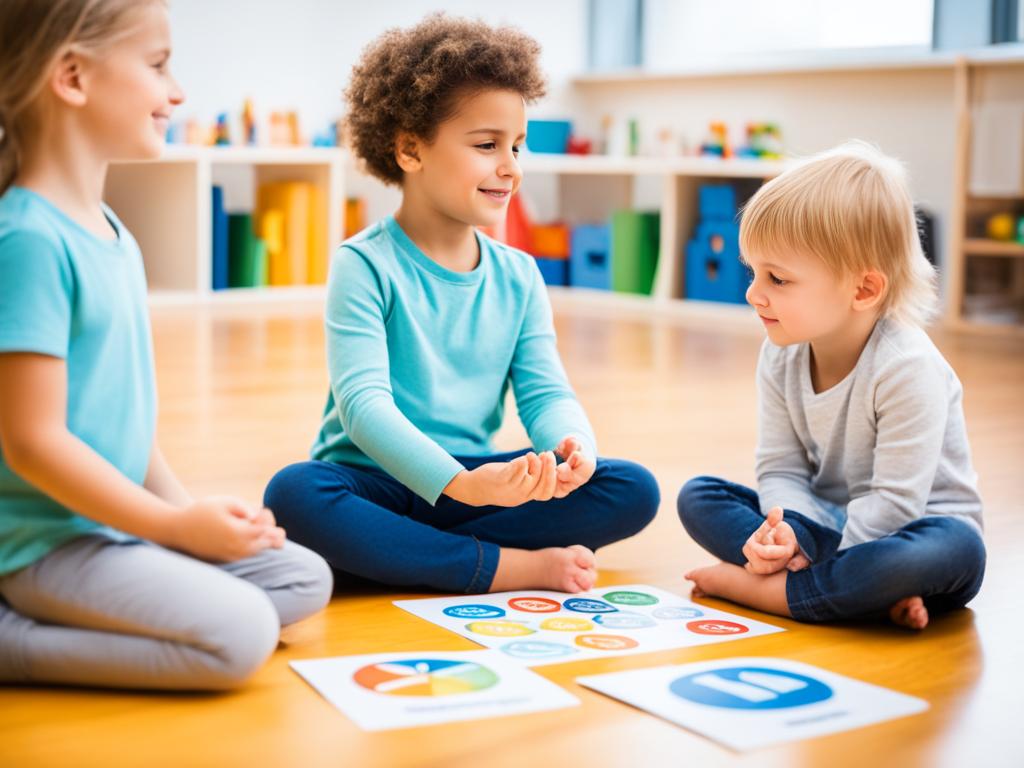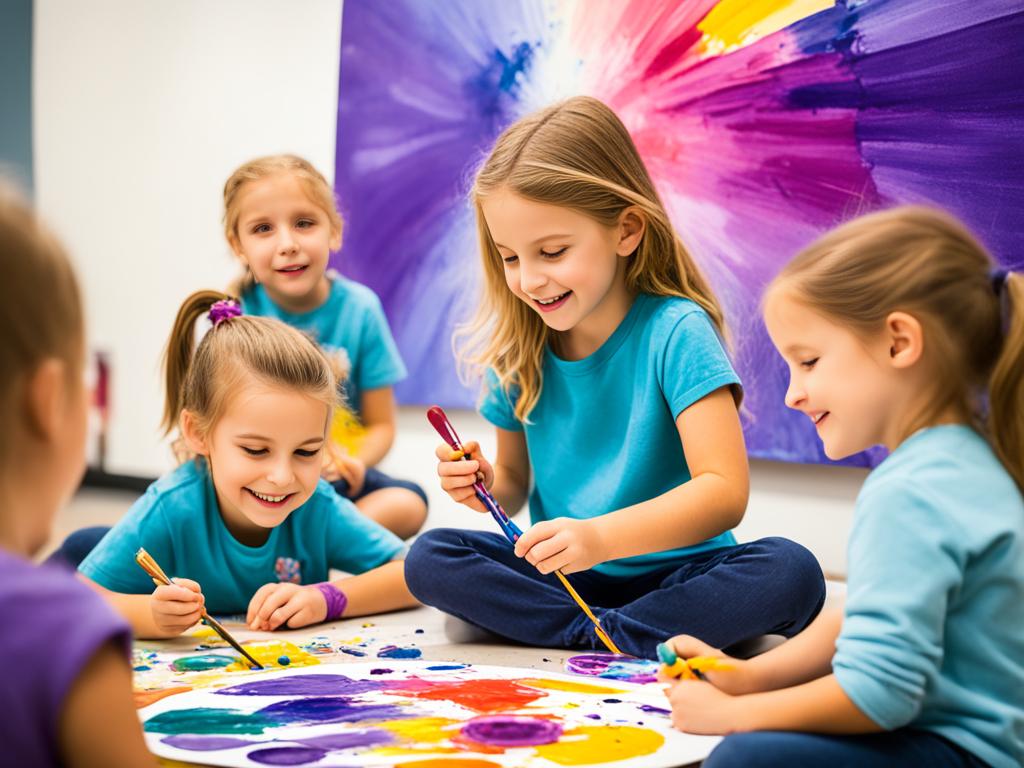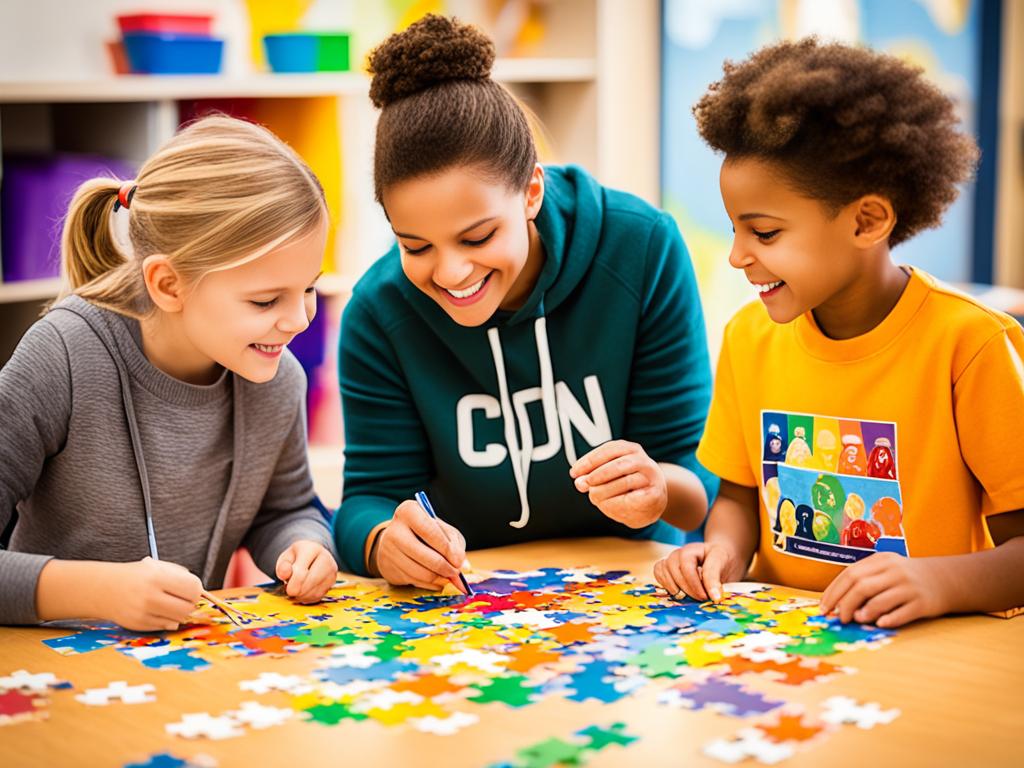
The Impact of Social and Emotional Learning (SEL) Programs
In today’s fast-changing schools, Social and Emotional Learning (SEL) Programs are getting a lot of attention. They teach students important skills for life, like emotional smarts and how to get along with others. By adding SEL to school, teachers help students grow beyond just doing well in class. This prepares them for success in all areas of life.

SEL programs focus on key skills like knowing oneself, managing feelings, understanding others, building relationships, and making good choices. These skills boost school performance and help with personal growth. They also improve social connections and help students understand their and others’ feelings better. With SEL, students get the skills they need to do well in today’s world.
What is Social and Emotional Learning (SEL)?
Social and Emotional Learning (SEL) helps students manage their feelings, make good friends, and make smart choices. It teaches important skills for their whole growth and happiness.
Defining Social and Emotional Learning (SEL) and Its Core Competencies
SEL has five main skills:
- Self-awareness: Knowing your feelings, strengths, and what you can do.
- Self-management: Keeping your feelings and actions in check.
- Social awareness: Understanding others’ feelings and stories.
- Relationship skills: Making and keeping strong friendships with friends and teachers.
- Responsible decision-making: Choosing what’s best for you and how you act with others.
The Importance of Social and Emotional Learning (SEL) in Education
Education now focuses more on making students whole, and SEL is key. It helps students deal with today’s challenges, grow emotionally, and creates a positive school atmosphere. This supports learning and happiness.

Benefits of Implementing Social and Emotional Learning (SEL) Programs
Adding social and emotional learning (SEL) programs to schools brings many benefits. These programs boost academic performance and improve social and emotional skills. They help students grow in emotional literacy and character development.
Improved Academic Performance
Research shows that SEL programs help students do better in school. They learn important skills like knowing themselves, managing their feelings, and making good choices. These skills help them stay focused, participate, and do well in class.
Enhanced Social and Emotional Skills
SEL programs aim to improve students’ social and emotional skills. Students learn to understand and control their feelings, connect with others, and make positive friendships. These skills boost their school work and get them ready for life after school.

SEL programs are key in teaching vital life skills. They help students become emotionally smart and well-rounded. This sets them up for success and happiness in the future.
Social and Emotional Learning (SEL) and Character Development
Social and Emotional Learning (SEL) programs are key in shaping students’ characters. They teach life skills and emotional literacy. This helps young learners deal with life’s challenges with more resilience and empathy.
SEL focuses on character development. It includes important skills like:
- Empathy: Understanding and sharing others’ feelings, which builds compassion and social awareness.
- Responsibility: Taking charge of one’s actions and decisions, leading to accountability.
- Ethical decision-making: Choosing actions that match moral values, helping students make right decisions.
SEL programs give students the tools to succeed in school and life. They learn to manage their feelings, form positive relationships, and make wise choices. This helps them understand themselves better and take charge of their lives.

Adding SEL to education shows a full approach to student growth. It mixes academic success with life skills and emotional literacy. This way, students become well-rounded, ready to positively affect the world.
Effective SEL Program Implementation Strategies
Starting a successful SEL program needs a full plan that includes everyone in the school. The best way to make SEL work is by using a whole-school method. This means teachers get full training and support.
Whole-School Approach
For SEL to work well, it must be part of everything in the school. This means SEL is in the curriculum, school rules, and the school’s culture. This way, SEL helps everyone in the school, including students, teachers, and the whole community.
Teacher Training and Support
Teacher training and ongoing support are key to a successful SEL program. Teachers need to know how to use SEL in their classes. They should get training through workshops and coaching. This helps them see why SEL is important and how to use it in their teaching.
Teachers also need ongoing help, like mentoring and learning from each other. They should have access to resources too. This makes teachers more confident and able to teach SEL skills to their students. This leads to better grades and happier students.

Measuring the Impact of SEL Programs
It’s key to check how well social and emotional learning (SEL) programs work. Teachers and leaders need to use assessment tools and metrics to see how SEL affects students. This helps them grow and do better in school.
Assessment Tools and Metrics
There are many assessment tools to check the effect of SEL programs. These include:
- Student self-assessments to see how they feel about their social and emotional skills
- Teacher and staff observations to notice how students act and engage more
- Parent surveys to hear what parents think about the program’s effects at home
- Standardized tests to see if students are doing better in school and skills
By using these SEL metrics, teachers get a full picture of how the program helps students. This info helps them make the program better and keep it working well for students.

Checking and reviewing SEL programs often is key to making them work best. With the right assessment tools and metrics, schools can see how their SEL efforts help students. This helps them make smart choices to support their students’ full growth and success.
Challenges and Considerations
Social and emotional learning (SEL) programs have many benefits, but they come with challenges. One big issue is finding enough money and resources to add SEL to school plans. Many schools struggle with tight budgets, making it hard to pay for teacher training, new lesson plans, and support for SEL programs.
Another challenge is getting teachers to accept change. Adding SEL means changing how schools work and how teachers help students grow. Some teachers might not want to try new ways of teaching. They might also feel they’re not ready to help students with their feelings and social issues.
- Challenges in SEL implementation include:
- Securing sufficient funding and resources
- Overcoming resistance to change within the school community
- Providing ongoing professional development and support for teachers
SEL program considerations also mean we need to keep checking if the programs work well. We must use strong tests and measures to see how SEL affects students. This looks at things like how well they do in school, their social skills, and their happiness.
To make SEL programs work, schools need to focus on training teachers well and giving them support. This means giving teachers the skills and tools they need to teach SEL. It also means creating a school culture that values learning about feelings and social skills.
Conclusion
Social and emotional learning (SEL) programs change how we teach and learn. They give students key life skills like emotional smarts and good communication. This helps them do better in school, get along with others, and be ready for today’s world.
SEL teaches important skills like managing oneself, understanding others, and making good choices. These skills help students become strong and resilient. Schools now see SEL as key to helping students grow fully, preparing them for life’s ups and downs.
By using strong SEL programs, schools help students reach their full potential. They become emotionally smart and ready to lead and make a difference. As SEL’s value grows, we all need to support it. This means making sure every student gets to benefit from these programs, leading to better learning and personal growth together.
FAQ
What is Social and Emotional Learning (SEL)?
SEL is about learning how to manage feelings, set goals, understand others, build strong relationships, and make good choices. It’s key for success in school, work, and life.
Why is SEL important in education?
SEL helps students get the skills they need for success. It boosts their academic performance, emotional health, and character. By learning to understand themselves and others, students do better in all areas of life.
What are the core competencies of SEL?
The core skills of SEL include:
- Knowing oneself and how feelings affect actions.
- Controlling one’s emotions and actions.
- Understanding others and social norms.
- Building and keeping strong relationships.
- Making choices based on ethics and safety.
How do SEL programs benefit students?
SEL programs help students do better in school and life. They learn important skills like emotional awareness, empathy, and problem-solving. This prepares them for success in school and beyond.
How can SEL contribute to character development?
SEL helps students develop important character traits like empathy and responsibility. It teaches them to manage their feelings and make good choices. This helps them grow personally and handle life’s challenges.
What are the key strategies for effective SEL program implementation?
For SEL to work well, it needs to be part of the whole school. Teachers must be trained and supported to teach SEL. This ensures SEL is taught effectively in the classroom.
How can the impact of SEL programs be measured?
To see how SEL programs work, we use different tools. These include student reports, teacher feedback, and standardized tests. They check if students are getting better at social and emotional skills, and if their grades and happiness improve.
What are some of the challenges in implementing SEL programs?
Starting SEL programs can be tough. Schools need money, teachers might resist change, and teachers need ongoing support. Planning well, working with everyone involved, and sticking with SEL are key to overcoming these issues.



Thanks for highlighting the importance of SEL in developing essential life skills like empathy, self-awareness, and self-regulation.